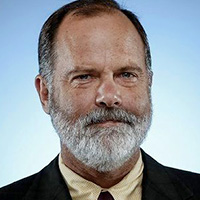“THE JETSONS.” “CHITTY CHITTY BANG BANG.” “STAR WARS.” “BLADE RUNNER.” From lighthearted to dystopian, these and countless other fragments of modern culture hold a technological fantasy in common: They assume a flying car.
For those of a certain age, the flying car has stood as a marker of the future, a symbol of aspiration and liberation — the expansion of freedom into a third dimension. Once that car was finally here, drivers would have the liberty of controlling their movement not only left and right but also up and down.
This has particular resonance in Los Angeles — and thus Hollywood, where most of those films and programs were made. For, as we all know, Los Angeles is the home of the freeway. No city is more attached to its freeways for getting around, and none has grown up more in relationship to its freeways — their impact on commerce, communities and culture is fundamental to how this city came to be.
But the freeways that were so formative have now become an anchor on the region’s ambitions. Can a car culture be compatible with mitigating climate change? Can the sense of freedom that comes with driving oneself be found on trains? Even such basic matters as family structure begin to feel the strain when cars and traffic put so many residents so far away from their workplaces. And then there’s traffic.
Here’s Step 1: If Los Angeles is to grow healthier and safer, it must give up some of its reliance on cars and freeways.
Fair enough. Even car enthusiasts see that the age of the freeway is passing. But figuring out what comes next, Step 2, is more difficult. It’s one thing to observe that a freeway-based society has problems, but it is another to solve the problems. If the freeway is Los Angeles’ mobility past, then what is its future, and how do we get there?
There is no shortage of intelligence being devoted to that question, and this issue of Blueprint sets out to survey some of the thinking. As always, our work is guided by two objectives: to introduce research to policy makers and, at the same time, to remind researchers of the real-world limitations of cutting-edge science.
Both camps have much to learn. Those who fashion policy need to think big — not to settle for carpool lanes or hybrid vehicles when the Earth is rising to a boil. At the same time, those who look beyond the horizon need to remember that it takes more than a nifty invention to change the way society is organized. Trains today are faster and more efficient than anything their inventors could have imagined at the dawn of the 1800s, but riders who once happily gave up horses to ride the rails now hesitate to board a Metro car with a homeless person.
Imagining transportation’s future can be fun. Building for it requires laws and regulations and infrastructure. A flying car is no good without a place to land.
























